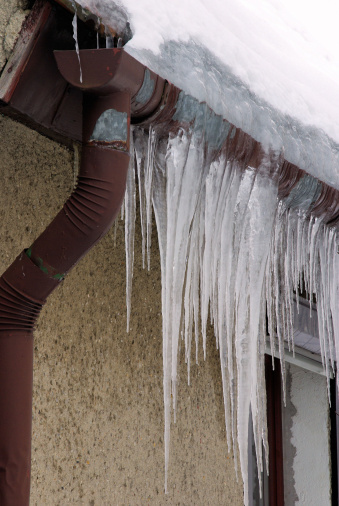The icicles dripping from gutters across the region aren t going away anytime soon since the.
Are icicles on gutters bad.
The typical home attic needs one square foot of open ventilation to the outside for every 300 square feet of ceiling area.
Cleveland ohio icicles are beautiful but sometimes they re a sign of big problems like ice dams.
Clogged gutters and downspouts generate excessive weight which can damage roofing and gutters.
As the snow melts water flows into a cold gutter gathering there and spilling over the sides forming icicles.
To prevent icicles from forming keep your gutters clear of leaves needles and other debris.
When it comes to icicles on gutters the warm air causes the underside of the roof to warm up and can thaw snow and ice.
If you re one of those homeowners i m here to tell you that icicles forming from your gutter guards is good not bad.
Icicles form when your gutters are obstructed by debris which can cause water to back up and settle on your roof.
This can cause one of two problems 1 icicles 2 ice dams.
It is inevitable you will always get icicles but the guard will protect the gutter cavity from filling and freezing by allowing the snow to melt and drip off taking away most of the burden from the gutter cavity in the long run.
Icicles are often an indicator of heat loss in old houses.
In the winter the heat inside your house will often keep the roof warm causing snow that has gathered there to melt.
But icicles have a dark side too and can actually pose a real danger to people pets and property.
Icicles are a common sight in the winter but despite their pretty appearance they can pose a threat to people pets and gutter systems.
A single gallon of rainwater can weigh as heavy as eight pounds.
Remember with accumulation in your gutters icicles will form without gutter guards installed but the formation of icicles on homes with gutter guards are not exempt from them either.
However while they are inarguably beautiful to look at they often indicate an underlying problem.
The resulting water will run down the roof and re freeze at the eaves or gutters when the outside air is below 32 degrees fahrenheit.
It s not always the case but leakier and poorly insulated older homes tend to excel in this department.

